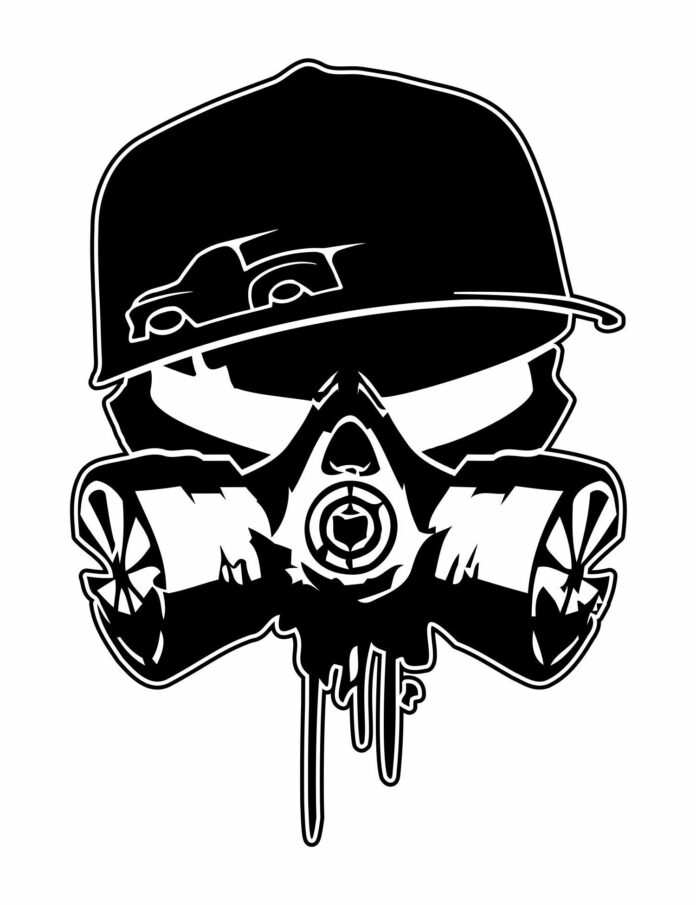Skull graffiti art has emerged as a striking sub-genre within contemporary street art, capturing the imagination and curiosity of a diverse audience. This art form transcends mere muralism to delve into complex themes of mortality, identity, and urban culture, making it an intriguing topic for exploration. The use of skulls as motifs in graffiti not only highlights the technical prowess of the artists but also serves as a commentary on societal issues and individual expression. This article seeks to grant readers insight into various facets of skull graffiti art, examining its history, cultural significance, and the array of styles that define the genre.
History and Evolution of Skull Motifs in Art
The representation of skulls in art can be traced back to antiquity, permeating various artistic movements and styles. From the memento mori of the Renaissance—serving as a reminder of human mortality—to the more contemporary interpretations seen in the street art movement, skulls have continuously captivated the artistic community. In graffiti, the skull operates as a universal symbol that resonates with a broad audience, often embodying themes of rebellion and transience.
This evolution reached a critical juncture in the late 20th century with the proliferation of graffiti as a recognized form of artistic expression. The juxtaposition of traditional tattoo culture and the rise of urban street styles began transforming the skull into a badge of honor, a motif celebrated for its gritty aesthetic. Artists such as Jean-Michel Basquiat and Keith Haring paved the way for incorporating socio-political commentary through their use of skull imagery, merging the conscious with the subconscious. The dynamic nature of graffiti allowed for spontaneous inclusion of skulls, serving as both artistic elements and socio-cultural critiques.
Decoding the Symbolism of the Skull
The symbolic resonance of the skull varies across cultural contexts, often oscillating between celebration and solemnity. In many traditions, the skull embodies death, yet it can also represent rebirth and transformation. In the world of graffiti, artists regularly exploit this duality by infusing their work with complex narratives.
For instance, the depiction of a skull wearing a gas mask or adorned with floral elements evokes a multitude of interpretations. It can symbolize the impact of environmental destruction, urban decay, or the threat posed by contemporary societal issues such as violence and pollution. Artists deliberately navigate these intricate meanings, allowing viewers to engage in a dialogue with the artwork. As a result, skull graffiti art not only serves as visual aesthetics but also compels the audience to reconsider their relationship with mortality and the urban landscape.
Diverse Styles in Skull Graffiti Art
The skull graffiti genre is often characterized by its eclectic range of styles, each with distinct techniques and artistic intentions. Embedded within street culture, artists employ various methods to create compelling expressions ranging from hyper-realistic renderings to abstract representations.
A popular technique in skull graffiti is the use of vibrant colors and intricate details, reminiscent of traditional tattoo artistry. Artists like Ryan “Haculla” Judlah and Chris “Daze” Ellis exemplify this approach, utilizing bold colors to create skulls that resonate with emotional depth. Their work stands in stark contrast to the bleak surroundings of urban decay, evoking a sense of vibrancy amidst desolation.
On the other hand, a minimalist confrontational style is also prominent in this genre. Artists may opt for stark monochromatic palettes or simplistic outlines that emphasize the foreboding nature of the skull. This minimalist aesthetic can amplify the emotional weight of the piece, allowing the starkness of the skull to command the viewer’s attention in a direct manner. Notable figures in this realm include the enigmatic artist known as Banksy, who often employs minimalism to drive home provocative social themes. Through simplicity, these artists masterfully foster a contemplative atmosphere that necessitates reflection.
Incorporation of Cultural Influences
The adaptability of skull imagery allows it to draw upon a plethora of cultural influences, enriching the narrative depth of the art form. In Latin American cultures, for instance, skulls symbolize the Day of the Dead (Día de los Muertos) festivities where death is celebrated rather than mourned. Artists like Ciriaco and collective brands such as “La Catrina” have seamlessly integrated these cultural elements into their graffiti works, creating vibrant murals that honor life while acknowledging death.
This cultural infusion speaks to the ability of skull graffiti to communicate complex identities and heritage. By adopting symbols from various cultures, graffiti artists foster dialogue around multiculturalism and coexistence within urban spaces. The act of blending influences illustrates the global nature of street art, showcasing a canvas that is both local and universal.
Conclusion: The Ongoing Dialogue of Skull Graffiti Art
Cool skull graffiti art serves as an eclectic amalgamation of history, cultural commentary, individual expression, and artistic innovation. Beyond mere aesthetic appeal lies an intricate network of symbols and meanings that engage audiences on multiple levels. As we navigate urban environments increasingly cluttered with visual stimuli, the skull remains a potent motif—a reminder of mortality, an emblem of rebellion, and a celebration of cultural heritage.
This ongoing dialogue not only enriches our understanding of the aesthetic dimensions of graffiti but also emphasizes the potential of art to inspire thought and dialogue. The multiplicity of perspectives expressed through skull graffiti embodies the spirit of street art—a medium that continues to evolve, inviting participation and reflection from all who encounter it.





























